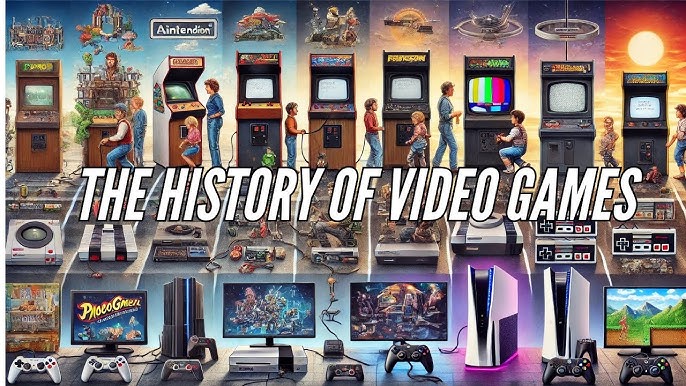The Evolution of Video Games: From Retro to Next-Gen
Video games have come a long way since their humble beginnings. From the simplicity of pixelated graphics to the jaw-dropping realism of modern titles, the gaming industry has evolved into a multi-billion-dollar juggernaut. Let’s take a journey through time to explore how video games have transformed over the decades.
The Dawn of Gaming: 1970s
The 1970s marked the birth of video games with classics like Pong (1972). These games were simple, relying on basic graphics and limited interactivity. Yet, they set the foundation for what was to come. Home consoles like the Atari 2600 brought the arcade experience into living rooms, paving the way for the gaming culture.
The Golden Age of Arcades: 1980s
The 1980s saw the explosion of arcades, where titles like Pac-Man (1980) and Donkey Kong (1981) became cultural phenomena. Consoles like the Nintendo Entertainment System (NES) revolutionized home gaming, introducing iconic franchises such as The Legend of Zelda and Super Mario Bros. This era also saw the rise of handheld gaming with devices like the Game Boy.
The 3D Revolution: 1990s
The transition from 2D to 3D graphics in the 1990s was a game-changer. Titles like Doom (1993) and Quake (1996) pioneered first-person shooters, while the Sony PlayStation introduced immersive 3D experiences with games like Final Fantasy VII. This decade also introduced online multiplayer gaming with services like SegaNet.
The Rise of Open Worlds: 2000s
The 2000s were defined by open-world games, giving players the freedom to explore vast virtual landscapes. Titles like Grand Theft Auto III (2001) and The Elder Scrolls V: Skyrim (2011) set new standards for storytelling and immersion. Online gaming flourished with platforms like Xbox Live, making multiplayer experiences more accessible.
The Era of Realism: 2010s
The 2010s pushed the boundaries of graphics and storytelling. Games like The Last of Us (2013) and Red Dead Redemption 2 (2018) showcased photorealistic visuals and emotionally gripping narratives. The rise of eSports and streaming platforms like Twitch transformed gaming into a spectator sport.
Next-Gen Gaming: 2020s and Beyond
Today, next-gen consoles like the PlayStation 5 and Xbox Series X deliver stunning graphics with ray tracing and lightning-fast load times. Virtual reality (VR) and augmented reality (AR) are redefining how we interact with games. Additionally, cloud gaming services like Google Stadia and Xbox Cloud Gaming aim to make gaming accessible anytime, anywhere.
The Future of Gaming
Looking ahead, artificial intelligence (AI) promises smarter NPCs and adaptive gameplay. Advances in VR and AR may soon blur the lines between the virtual and real worlds. As technology continues to evolve, the possibilities for gaming are endless.
Conclusion From 8-bit classics to hyper-realistic worlds, video games have grown into an art form that captivates millions worldwide. Whether you’re a fan of retro games or a next-gen enthusiast, there’s never been a more exciting time to be a gamer.


